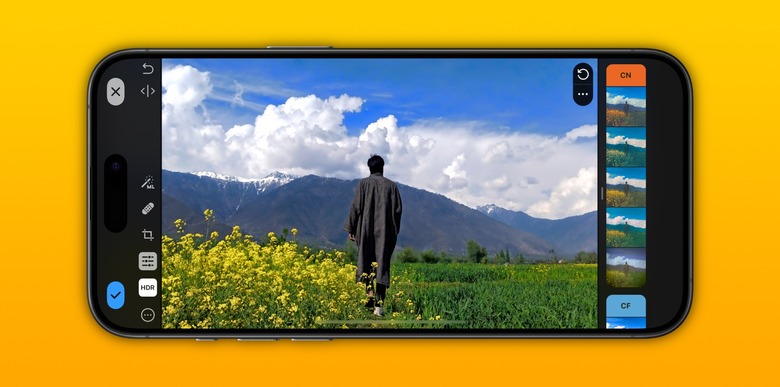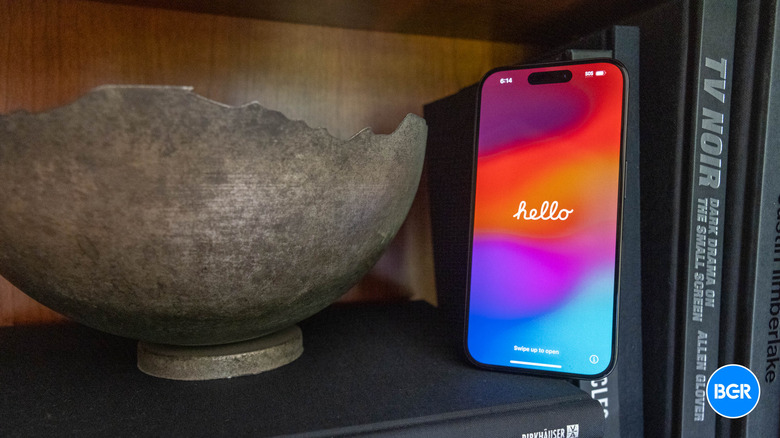Photomator Now Supports HDR Content Editing On iPhone 15
After a couple of months, Photomator is finally releasing support for HDR content editing on iPhone 15, iPhone 14 Pro, and Macs and iPads with HDR displays. The developers from Pixelmator added this feature as the regular iPhone 15 models offer a professional-grade display with 1600 nits of peak brightness, which the company says is "perfect for viewing and capturing HDR photos."
With that, Photomator 3.2 adds full HDR support, letting users import, edit, and export HDR images, including those taken with an iPhone, and introduces a Smart HDR feature for intelligent SDR-to-HDR photo conversion.
"Most iPhone users have captured hundreds or even thousands of HDR photos but – until now – they've had no way to easily edit them while preserving all their HDR data," said Simonas Bastys, lead developer at the Pixelmator Team. "With full HDR support now added to Photomator, we're giving our users the ability to edit and fully harness the potential of their HDR photos."

The company explains that, compared to Standard Dynamic Range (SDR), High Dynamic Range (HDR) takes the viewing experience to "an entirely new level." HDR allows users to bring back more detail in bright and dark areas of photos and to see a broader range of colors. "This translates into outstanding contrast, brighter whites, and richer colors, letting your photos mirror real life more closely. When compared side by side, SDR photos appear flatter and less vivid, whereas HDR photos are notably more vibrant."
Photomator says that editing and exporting photos in HDR turns them into "future-proof" images. The company lets users transition between the two modes. "So, when exporting photos in HDR, simply check how the photo will look to someone viewing it in SDR or on a display with limited HDR capabilities. You might need to tweak the colors to ensure your photo looks great in both SDR and HDR, but when viewed in HDR, the colors in the photo will be on an entirely different level."
This major update also brings full compatibility with iOS 17 and macOS 14 Sonoma. For users on iOS 17 and macOS 14, it brings an enhanced Select Subject algorithm for faster and more precise subject selections in photos and introduces full support for JPEG XL files. Additionally, Photomator 3.2 adds full AVIF file format support for all users.
How to work with HDR photos in this Photomator's update
In a blog post, the Pixelmator team explains how to work with HDR photos in different displays:
- Full XDR displays. For the most striking results with HDR photos, use the latest Apple devices with full XDR displays. This includes iPhone 15 and iPhone 15 Pro, Macs and iPads with XDR displays, and Pro Display XDR. HDR content will be loaded automatically on these displays.
- Limited support HDR displays. MacBook Air, iMac, iMac Pro, Studio Display, and older MacBook Pro models not equipped with XDR displays provide limited HDR support with peak brightness ranging between 300 and 600 nits. When working on such displays, you can select whether you want to load the HDR data or not in Photomator settings.
- Non-Apple HDR Displays. These displays are supported but offer a slightly less streamlined editing experience. For example, when editing images in HDR, the entire screen, including the Photomator interface, will be displayed in HDR instead of just the photo itself. Additionally, after syncing edits to Photos, only SDR thumbnails of photos will be visible in the Photos library. This also applies to limited support HDR displays.
Photomator is available to download for free from the App Store. During the Black Friday sale, the first year of an annual Photomator subscription costs just $9.99, a 70% discount off its usual price. Additionally, users can choose a monthly subscription at $4.99 per month or purchase a lifetime license for $99.99.

